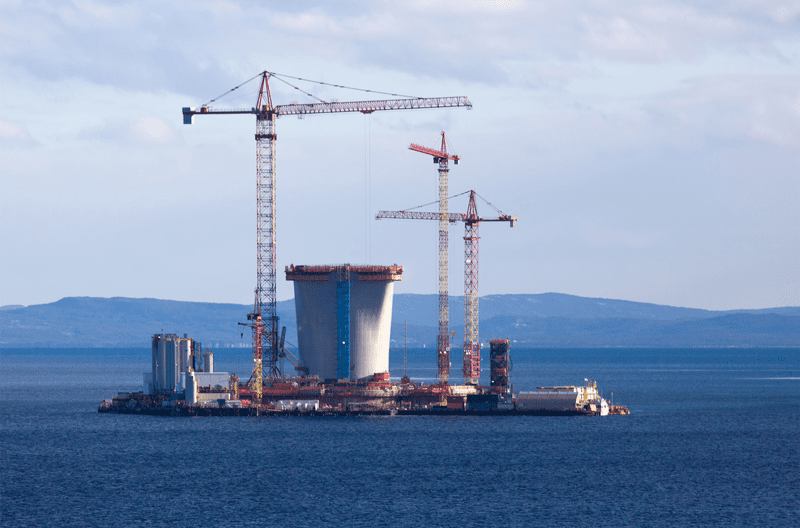Geographic information system (GIS) data enables collecting and analyzing spatial and location-based information and extracting valuable insights from it. Here are some of the emerging ways companies can use GIS in oil industry projects.
Getting More Familiar with Worldwide Oil Operations
When oil professionals have a broader understanding of current or historical activity in the industry, it becomes easier to decide where to focus future efforts to get the best outcomes. However, finding reliable oilfield data is not as straightforward as you might think.
The ROSA GIS Project sought to reduce some of the known challenges by using a pyramid structure when categorizing information. The first level included data from countries with at least 1,000 million tons of oil in reserves. Researchers applied their acquired knowledge throughout their work, eventually making the content even more specific with each level of information created.
They concluded that this work gave a global look at the most prominent oil extractors and where those companies operate. The data also included details about how the brands use technology to achieve their aims. This kind of comprehensive database could prove instrumental for businesses making decisions about how and when to expand their worldwide footprints.
Studying the Impact of Oil Infrastructure on Marine Life
Environmental activists commonly discuss the negative impacts of the oil industry on marine life while overlooking the positive aspects. For example, decommissioned rigs often become artificial coral reefs. Moreover, oil helps feed many organisms found in deep-sea regions. The lack of light in those parts of the ocean means oil and gas provide energy for bacteria living there.
A collaborative scientific research program seeks to learn more about how the oil industry affects marine life in the North Sea through its collective actions. GIS software will help participants draw many of their conclusions. The program, known as INSITE, now has a GIS-based data-sharing portal called INSITE Interactive. It gives scientists access to oil sector information that they could not otherwise see.
Richard Heard, the program’s director, comments, “This tool has been developed to provide a robust process for scientists to identify data collected by industry during their operations, which could be used to further research into the role of anthropogenic structures in the ecosystem. The new portal provides a GIS-based reference for sourcing industry-held ecological data relating to offshore structures.”
Increasing Transparency Between Multiple Parties
GIS software helps people use information collected by global positioning system (GPS) satellites. Many forward-thinking construction companies combine GPS survey equipment with digital terrain modeling and topographic data collection. The benefits of these advanced technologies mean that clients have a clearer idea what to expect during the early stages of a process and don’t experience costly, frustrating surprises later.
Oilfield data could become crucial for increasing project success rates and boosting visibility in countries known for their petroleum exportation. In Pakistan, government officials recently began using a dashboard for managing and monitoring exploration and production data. The tool lets people use GIS in oil to access real-time information and guide their decisions about suspended or shut-in wells, delayed drilling or other challenges.
Since parties in Pakistan’s provinces get paid royalties on oil and gas production and consumption, there was a growing need for up-to-date data to inform future payments and ensure fairness. People using the tool can filter information by company or basin and then export it as GIS layers, PDFs or Excel spreadsheets. The program also contains specifics for current wells and upcoming plans.
Learning How Local Requirements Impact Oil Availability
Many places in the United States have oil and gas setback requirements. They stipulate the minimum distances between oil and gas activity and the locations of homes, schools and businesses. Researchers in Colorado investigated whether certain setback distances affected oil and gas availability. The team restricted its study to that single state and used both GIS data and publicly accessible information.
The findings showed a direct relationship between the state’s annual resource revenues and the mandated setback distances. The span ranges from 500-1,500 feet depending on nearby developments. Setbacks of 1,500 feet cause a loss of 0.1 percent or $500 million for Colorado’s gross domestic product. However, the setback costs for revenues balloon to $4.5 billion when increasing the required distance to 2,500 feet.
Daniel Kaffine, an economics professor and co-author of the study, remarks, “In some counties, increasing the setback just 500 feet had major consequences in terms of accessible oil and gas.” This kind of data makes it easier for oil company lobbyists to argue against increasing these distances, as some ballot initiatives in Colorado tried to accomplish. This example shows that seemingly small changes can make significant differences.
Enhancing Responses to Oil Spills
Oil spills can become public relations disasters for the companies responsible. Fortunately, GIS software emerged as a crucial advancement that supports when and how these enterprises respond. There are then more opportunities for oil brands to ensure they do everything possible to minimize the damage, whether to the environment or their reputations.
Officials in Newfoundland hired consultants to explore how to apply GIS technology to the region’s oil spill response. The Hibernia oilfield sits about 300 kilometers offshore from St. John’s Newfoundland. It contains the world’s largest oil drilling platform, so planning for future spills became exceptionally important. The consultants integrated GIS technology into a database that gives accurate information to command centers and informs emergency responses.
Sharon Janes, a senior consultant at the company selected for the job, explains why GIS data on a digitized platform would make such a major difference. “The problem with these [commonly used paper] resources is that they do not present information that is as complete and current as possible within an emergency situation. This is what we are excited to help change – putting this data into the hands of responders as quickly and efficiently as possible.”
Making Oilfield Data More Applicable
Companies tend to enjoy better outcomes when relying on statistical information instead of guesswork. These examples show that there are plenty of compelling reasons to use GIS in oil industry endeavors.
However, company representatives that want to move forward with that option should not do so haphazardly. They should first investigate vulnerabilities or challenges that must be dealt with. They’re then in significantly better positions to explore how GIS information could help overcome those issues and make the brand more profitable in the process.
Headline photo courtesy of GeoffreyWhiteway – FreeRange Stock
Megan R. Nichols is a technical writer who regularly contributes to sites like American Machinist and Manufacturing tomorrow. She also publishes easy to understand manufacturing and engineering articles on her blog,Schooled By Science. Keep up with Megan by subscribing to her blog or following her onTwitter.







